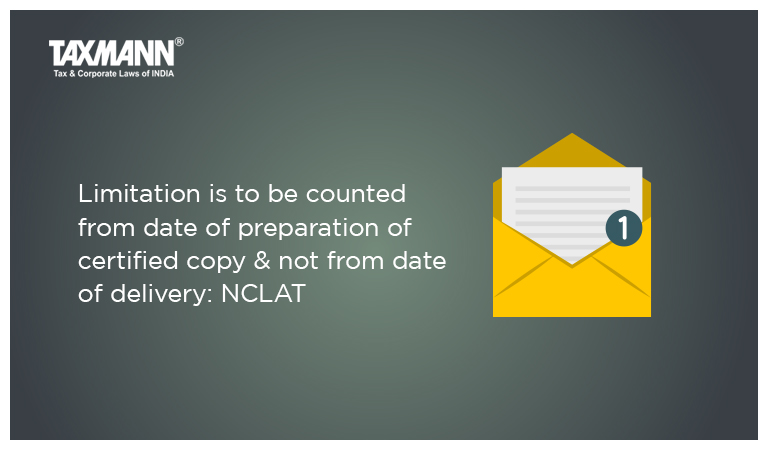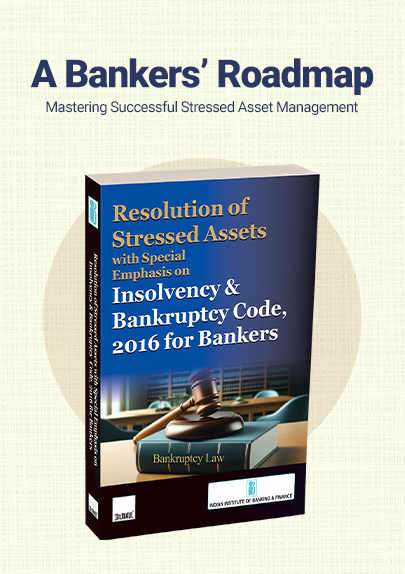Limitation is to be counted from date of preparation of certified copy & not from date of delivery: NCLAT
- Blog|News|Insolvency and Bankruptcy Code|
- 2 Min Read
- By Taxmann
- |
- Last Updated on 9 September, 2022
Case Details: Wadhwa Rubber v. Bandex Packaging (P.) Ltd. - [2022] 142 taxmann.com 169 (NCLAT-New Delhi)
Judiciary and Counsel Details
-
- Rakesh Kumar Jain, Judicial Member & Dr Alok Srivastava, Technical Member
- Mohit Aggarwal, Adv. for the Appellant.
Facts of the Case
In the instant case, an appeal was filed against the order dated 08.01.2020 passed by the Adjudicating Authority (NCLT) whereby an application filed u/s 9 of the IBC has been dismissed.
The appellant had applied for the certified copy of the order dated 08.01.2020 on 10.02.2021 i.e. almost after a year. The copy of the order was prepared on 17.02.2021. However, it was taken by the appellant on 06.04.2021 and then the appeal was filed on 04.08.2021.
During the course of the hearing, the appellant was asked why the appeal was not filed within a period of 30 days from the date of the order i.e 08.01.2020. In this regard, he submitted that the copy which is to be given free of cost was not supplied and therefore, the certified copy was applied on 10.02.2021 and when it was delivered, the appeal was filed which was within the period of limitation.
The Adjudicating Authority (NCLT) dismissed the application filed u/s 9 of the IBC on 08.01.2020. Thereafter, an appeal was made to the National Company Law Appellate Tribunal (NCLAT) against the order passed by the Adjudicating Authority (NCLT).
NCLAT Held
The NCLAT observed that the certified copy appeared to have been applied on 10.02.2021 and was prepared on 17.02.2021, however, the appellant spent almost two months even in taking the certified copy from the Tribunal. It is well settled that the limitation is to be counted not from the date of delivery of the certified copy but from the date of preparation of the certified copy.
The NCLAT, further observed that it was prepared on 17.02.2021 and if the limitation was to be counted from 17.02.2021 the same had expired much earlier than the date of filing of the appeal on 04.08.2021.
The NCLAT held that the appeal filed by the appellant was without limitation provided u/s 61 of the Code of a period of 30 days and section 61(2) proviso, an additional period of 15 days for which discretion is granted to the Appellate Authority to condone only on being satisfied that there is a sufficient cause for condonation of delay.
Accordingly, the appeal was to be dismissed.
Disclaimer: The content/information published on the website is only for general information of the user and shall not be construed as legal advice. While the Taxmann has exercised reasonable efforts to ensure the veracity of information/content published, Taxmann shall be under no liability in any manner whatsoever for incorrect information, if any.

Taxmann Publications has a dedicated in-house Research & Editorial Team. This team consists of a team of Chartered Accountants, Company Secretaries, and Lawyers. This team works under the guidance and supervision of editor-in-chief Mr Rakesh Bhargava.
The Research and Editorial Team is responsible for developing reliable and accurate content for the readers. The team follows the six-sigma approach to achieve the benchmark of zero error in its publications and research platforms. The team ensures that the following publication guidelines are thoroughly followed while developing the content:
- The statutory material is obtained only from the authorized and reliable sources
- All the latest developments in the judicial and legislative fields are covered
- Prepare the analytical write-ups on current, controversial, and important issues to help the readers to understand the concept and its implications
- Every content published by Taxmann is complete, accurate and lucid
- All evidence-based statements are supported with proper reference to Section, Circular No., Notification No. or citations
- The golden rules of grammar, style and consistency are thoroughly followed
- Font and size that’s easy to read and remain consistent across all imprint and digital publications are applied






 CA | CS | CMA
CA | CS | CMA


